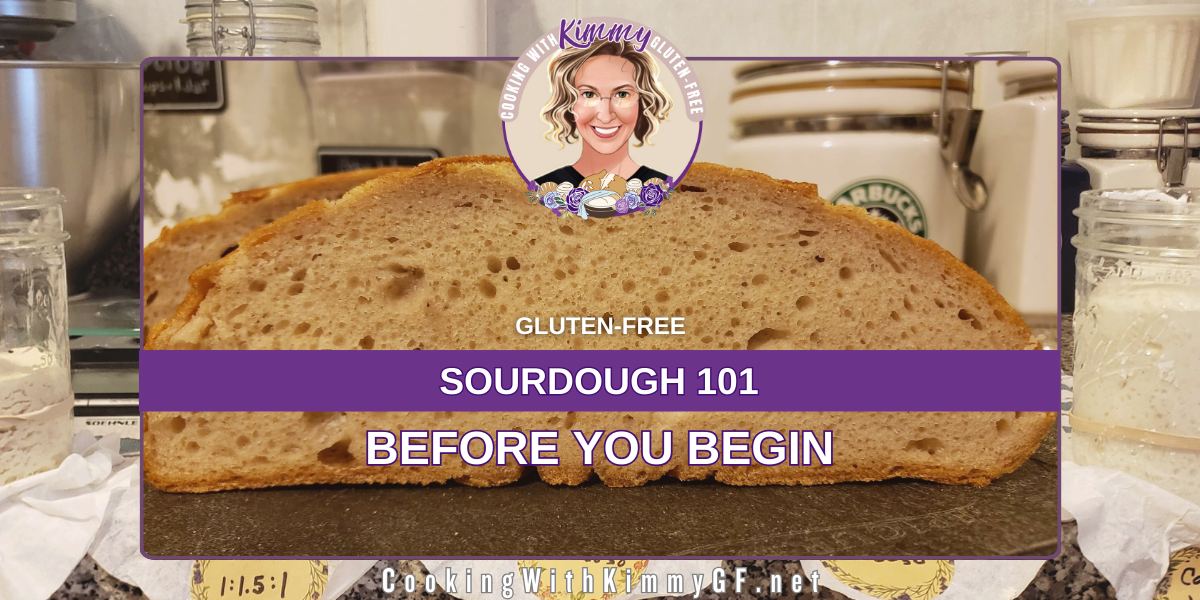I want to make sure that everyone gets what they need to successfully bake their own Gluten Free Sourdough. In order to do so, it is important that you understand my goals and methods of teaching, as well as a few things about sourdough in general. There are many Gluten Free Sourdough books and sites out there, and a lot of what seems to be contradicting information and methods. The first thing to know is that there really is not any single “right way” to succeed in gluten-free sourdough. So not all the info you read is really contradicting or wrong – just different methods and opinions. However, some of it can be – and is – very wrong. The difficult part (especially for beginners) is deciphering through all that information and knowing what is fact, what is opinion, what works and what doesn’t, and what is actually wrong – potentially lead to a dangerous situation for your starter and even for you.
About me and how I approach teaching sourdough:
- First for you to know is that I am not an expert – just a hobby baker who had to go GF, and became determined to figure this all out. I figured I was not alone in being confused, frustrated and overwhelmed so I started a Facebook group to help share what I was learning and hopefully safe a few from that same rabbit hole. That group exploded, so I started this site to better control, organize and share. Since I am not a professional baker I may not always use the correct terminology and my methods may be far from traditional. But they work (at least for me).
- That leads me to my second point: I really do not put much focus to pretty – a perfect ear or beautiful score design does not equate to a delicious loaf that actually tastes like the real bread I miss. If you are looking for someplace to teach you how to get the award winning loaf to sell at your Farmers Market this might not be the best place for you to learn. If you are looking for a delicious bread that will give you a good sandwich or some tasty toast and jelly – you are in the right spot!
- I am not perfect – still learning as well. Sometimes my information is wrong – although I do my best to only present what I’ve proven as true. If I ever learn that something I put up is wrong, it will be corrected. And as I learn new techniques or different methods that appear to work better I’ll be updating these posts. There’s always room to learn more!
- KISS (Keep It Simple Sourdough): My goal is to not make you all become science majors in order to understand the how’s and why’s of your starter and baking. Gluten-free is difficult enough, and the science to make ours work is just as difficult. One of the frustrating things for me when I first started baking Gluten Free was feeling like every single recipe I found was a full blown science lesson. When I teach now, my goal is to include only science that is absolutely necessary. That science will be presented as simply as possible. There may be more posts about the deeper science later, but for just starting out we will still keep it simple.
About Gluten-Free Sourdough in General:
- It is VERY different from traditional sourdough. Even if you have perfected your wheat based loaf baking, be prepared. You cannot just swap gluten free starter and flour in a traditional recipe and expect good results. This will be explained in upcoming posts. The starter is different. The procedures are different. The “rules” are different. It is all different.
- It takes a lot of patience, with trial and error, to get a good loaf. This does not necessarily mean it is hard, but it is not as easy as a standard loaf. You need to learn your starter and how it behaves. Be prepared for flops. There are many, many variables that affect how your sourdough will come out. What works for the person across town may be a complete disaster for you. Gluten-free sourdough seems to be much more sensitive to even minor changes in temperature, humidity, elevation and more, making each and every starter/loaf a truly unique endeavor. For this reason, there is no one size fits all method or recipe. While it will take some trial and error to get a loaf you enjoy, the effort will be well worth it!
- It is not the cheapest endeavor to begin – but is more cost effective in the long run. GF sourdough requires additional ingredients – multiple flours and starches or a good flour blend, binders, protein. It can seem like a lot up front, but if you do the math each loaf will still cost far less than the mediocre bread you can buy in the stores. Any equipment you need to purchase are multi-use, you’ll get your moneys worth from them. The point is to try not to cringe at the initial cost, it balances out. There will be more info on this in upcoming posts too.
If all this makes sense then let me welcome you to Cooking With Kimmy’s GF Sourdough 101! Newly released posts area announced on my social media pages as soon as they are live, so follow me on Facebook and Instagram to stay up to date.





